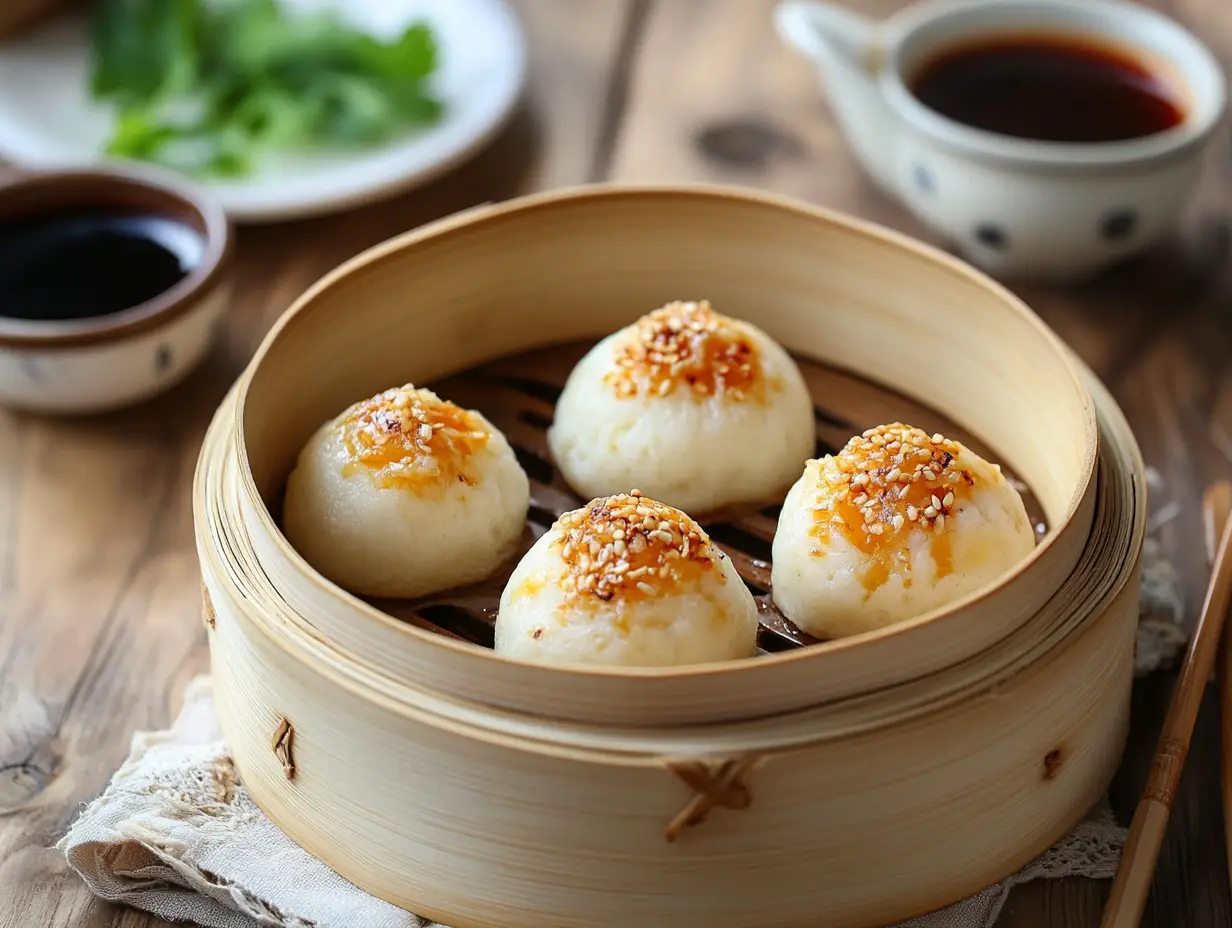Discover the wide variety of Chinese breakfast options and learn how to incorporate them into your morning routine. Explore unique flavors and healthy choices.
Introduction to Chinese Breakfast
A typical Chinese breakfast offers a wonderful array of flavors and dishes that can differ vastly from Western breakfast traditions. Whereas Western mornings might start with toast and coffee, breakfast in China is a time for savory congee, steamed buns, crispy Jianbing, and delicate dim sum. This diversity offers a culturally rich experience that truly embodies the essence of comfort and energy.
In Chinese culture, breakfast is considered one of the most important meals of the day, packed with warm and hearty dishes that provide lasting energy. While both Western and Chinese breakfasts offer variety, the latter takes you on a culinary journey that’s not just about taste but also tradition, history, and community .
Popular Types of Chinese Breakfast
Dim Sum: The Classic Choice
Dim Sum is perhaps the most famous part of Chinese cuisine, particularly when it comes to breakfast. Traditionally served in small bamboo baskets, dim sum can include a variety of dumplings, buns, and pastries, making it a popular choice among families and groups. The practice of enjoying dim sum with tea is often called “Yum Cha,” which means “drinking tea,” and is particularly popular in Guangdong and Hong Kong.
- Varieties of Dim Sum: Shrimp dumplings (Har Gow), pork buns (Cha Siu Bao), and spring rolls are some classic breakfast favorites.
- Health Benefits: Steamed dim sum options are often low in oil, making them a lighter breakfast alternative compared to fried foods. Dim sum also includes many types of seafood and vegetables, adding essential nutrients to the morning meal.
Congee (Rice Porridge)
Congee, a simple and hearty rice porridge, is a staple of Chinese breakfast, offering a warm and comforting start to the day. The flavors of congee vary greatly based on regional preferences and ingredients. People typically make congee with chicken, pork, fish, or keep it plain with simple condiments like soy sauce, ginger, or scallions. You can also customize congee with toppings such as pickled vegetables, peanuts, or century eggs, creating endless variations and personalization.
- Varieties and Significance: Century egg congee (Pidan Zhou) and seafood congee are beloved dishes across China. Many people pair congee with side dishes like pickled vegetables or peanuts.
- How Congee Is Consumed: People in Southern China enjoy smoother, thinner congee, often paired with deep-fried crullers (Youtiao). In Northern regions, they prefer thicker, more substantial congee.
Jianbing (Chinese Crepes)
Jianbing is one of China’s most popular street foods and a breakfast staple. Often described as the Chinese equivalent of a breakfast burrito, Jianbing consists of a crispy crepe made from wheat and mung bean flour, filled with egg, scallions, and a combination of savory sauces. Some variations also include additional fillings like fermented bean paste, coriander, or even spicy sausage, adding extra layers of flavor and complexity to this beloved dish.
- Ingredients and Regional Variations: The beauty of Jianbing lies in its simplicity and versatility. It is commonly filled with fried crackers (Bao Cui), pickled mustard, and chili sauce. In some regions, variations include sausage or extra vegetables.
- Popularity: Jianbing is a quick, handheld breakfast that is highly convenient, especially for those commuting to work. Its flavor and crunchiness make it a beloved comfort food.
Steamed Buns (Baozi)
Baozi are soft, steamed buns filled with a variety of ingredients, ranging from savory meat to sweet red bean paste. These buns are perfect for breakfast and are available at nearly every corner food stall and breakfast vendor in China. Baozi provide a widely accessible, convenient, handheld option that commuters and busy individuals can easily enjoy on the go, making them a favorite choice.”
- Types of Baozi: Meat-filled Baozi often feature pork, chicken, or beef, while sweet Baozi include fillings like lotus seed paste or custard.
- Preparation Methods: Cooks usually steam Baozi in large bamboo steamers, which create a soft and fluffy texture.
Soy Milk and Youtiao (Chinese Doughnut)
Soy milk pairs perfectly with crispy Youtiao (a fried dough strip), creating a classic Chinese breakfast combination. People often enjoy this light meal in urban areas where breakfast vendors serve freshly made soy milk. They offer a variety of condiments, such as sugar, salt, or scallions, allowing customization to suit personal taste preferences.
- Nutritional Value of Soy Milk: Rich in protein and low in cholesterol, soy milk is a nutritious beverage. Paired with Youtiao, it provides a balance of protein and carbohydrates for a complete breakfast.
- Youtiao as a Companion: Often dipped in warm soy milk, Youtiao is crispy and slightly savory, making it an ideal complement to the creaminess of the soy milk.
Regional Differences in Chinese Breakfast

Northern China Breakfast Options
Breakfast in Northern China often includes heartier, wheat-based dishes. Steamed buns, dumplings, and Jianbing are common due to the reliance on wheat rather than rice in the north. Beijing’s popular Douzhi (fermented mung bean milk) might not be loved by everyone, but it’s a traditional choice that reflects the local palate. Additionally, Northern breakfasts often include savory pancakes and stuffed flatbreads, which are perfect for those looking for a filling start to their day, especially during the colder months.
Southern China Breakfast Specialties
The southern regions, particularly Guangdong, are famous for Dim Sum, often accompanied by tea. The use of rice is more prevalent, with congee and rice noodles making up a significant part of breakfast. In places like Fujian, seafood congee is a popular morning dish. Additionally, rice noodle rolls (Cheung Fun) are commonly enjoyed, offering a soft and silky texture that pairs perfectly with soy sauce and various fillings like shrimp, pork, or vegetables.
Western China Breakfasts
In Western China, including Xinjiang, breakfast is a vibrant example of Asian Breakfast traditions, incorporating influences from Central Asia. Naan bread, lamb skewers, and milk tea are more common, reflecting the diverse cultures in this region. Tibetan breakfasts might include Tsampa (roasted barley flour) and butter tea, which are suitable for the colder climate. Additionally, Xinjiang’s famous Xinjiang-style flatbreads and spiced lamb pilaf are also popular breakfast choices, offering rich flavors that are deeply influenced by Central Asian cuisine.
Health Considerations and Benefits of a Chinese Breakfast
Chinese breakfasts tend to include a balance of carbohydrates, proteins, and vegetables, providing a nutritious start to the day. Compared to a typical Western breakfast of sugary cereals or pastries, a traditional Chinese breakfast offers sustained energy without excessive sugar or empty calories. Many of these dishes emphasize whole, minimally processed ingredients, contributing to overall health and wellness.
- Nutritional Benefits: Many Chinese breakfast dishes, such as congee and soy milk, are low in fat and high in essential nutrients. Dim sum options, like shrimp dumplings, offer lean protein and omega-3 fatty acids, while also being rich in vitamins and minerals that support overall health. Additionally, the inclusion of vegetables in many dishes provides dietary fiber, which aids digestion and promotes a healthy gut.
- Healthier Options: Opting for steamed over fried dishes, like steamed dumplings instead of fried Youtiao, can make a Chinese breakfast even healthier. Including vegetables, such as in Jianbing or in congee side dishes, adds fiber and vitamins to the meal, which help support digestive health and provide essential nutrients for overall well-being. Incorporating more plant-based proteins, such as tofu or edamame, can also further enhance the nutritional value while reducing saturated fat intake.
Making a Traditional Chinese Breakfast at Home

Cooking a Chinese breakfast at home can be both simple and rewarding, offering an opportunity to experience authentic flavors right in your own kitchen. Here, we’ll go through a few basic recipes you can try in your kitchen, each designed to be accessible and full of traditional taste.
- Congee Recipe: To make basic congee, you’ll need 1 cup of rice and 8 cups of water or chicken broth. Simply rinse the rice and boil it with the liquid for about an hour until it becomes a creamy consistency. Add toppings such as scallions, ginger, or shredded chicken for extra flavor.
- Jianbing Recipe: For Jianbing, mix wheat flour, mung bean flour, and water to create a smooth batter. Cook it on a flat skillet, add an egg, and spread evenly. Sprinkle with scallions, pickled vegetables, and a bit of chili sauce before folding it up.
- Baozi Recipe: Making Baozi requires dough preparation and filling of your choice (e.g., pork or sweet bean paste). After filling and shaping the buns, steam them for 15-20 minutes for a fluffy result.
Chinese Breakfast for Busy Mornings
Busy individuals can prepare several Chinese breakfast dishes in advance or make them quickly, ensuring a nutritious start to the day without spending much time in the kitchen.
- Quick Breakfast Options: You can steam frozen Baozi in just a few minutes, making them perfect for a fast breakfast. Prepare congee in a slow cooker overnight to wake up to a hot meal.
- Make-Ahead Recipes: Prepare Jianbing batter the night before to quickly cook fresh crepes in the morning. Similarly, you can make dim sum fillings ahead of time to save effort during busy mornings.
FAQ Section
What is the healthiest Chinese breakfast?
Congee, paired with vegetables and lean proteins like chicken or seafood, is one of the healthiest Chinese breakfast options. It’s light, easy to digest, and provides a good balance of carbs and protein.
What is Japanese main breakfast?
The typical Japanese breakfast includes rice, miso soup, pickles, and grilled fish. It’s a well-balanced meal that emphasizes simplicity and nutrition.
What are three traditional breakfast dishes?
Three traditional Chinese breakfast dishes include Congee, Jianbing, and Baozi. Each dish represents different regions and styles within China’s rich culinary landscape.
Can you eat Chinese food for breakfast?
Absolutely! Chinese cuisine offers many dishes specifically made for breakfast, including dim sum, congee, and Jianbing. These dishes provide warmth, comfort, and nutrition to start the day right.
Conclusion
A traditional Chinese breakfast is more than just a meal. It’s an experience filled with diverse flavors, textures, and cultural richness. You might enjoy the light comfort of congee, the crispy layers of Jianbing, or the communal joy of dim sum. Chinese morning cuisine offers something for everyone. Its variety and nutrition make it an excellent way to start your day. These meals provide both health benefits and a delightful taste of tradition. Warm, freshly prepared dishes nourish the body and mind, fostering a sense of well-being. This sets a positive tone for the day. Many dishes are meant to be shared, creating lasting memories with family and friends. This connection to culture and tradition also strengthens the sense of community.

